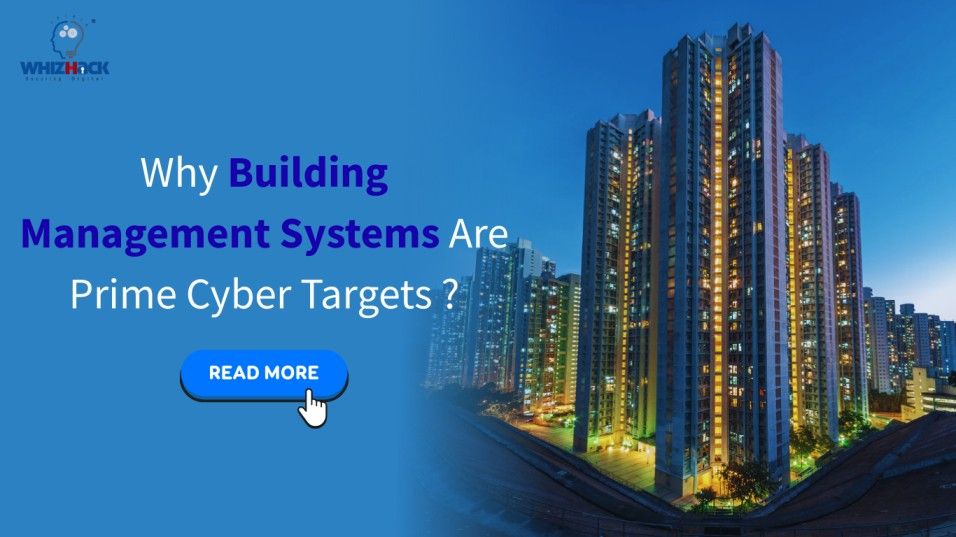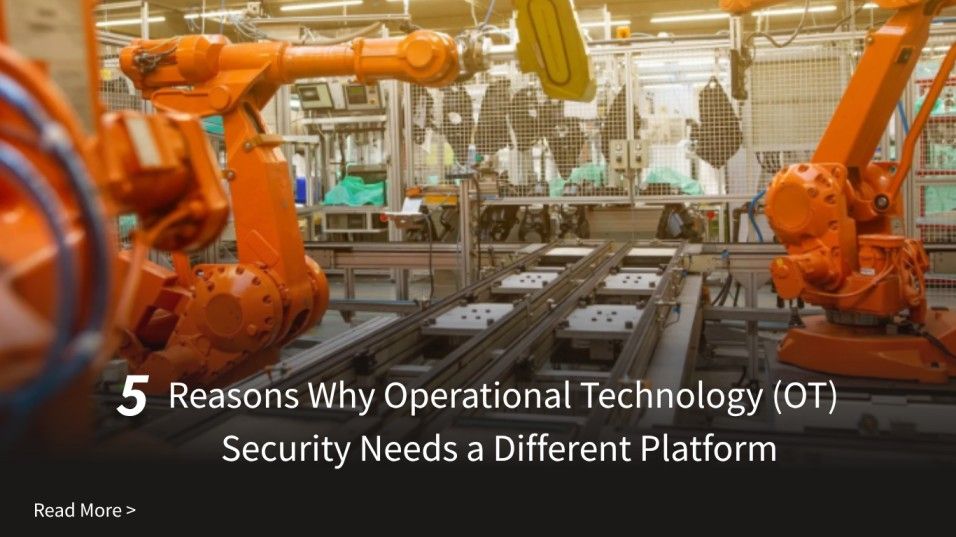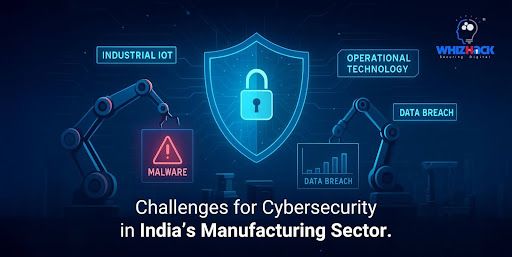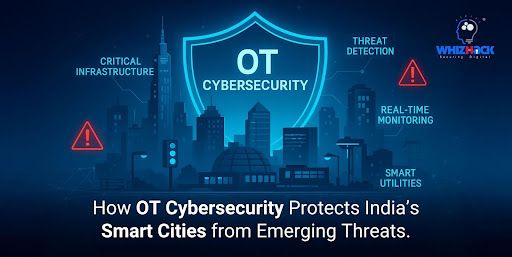In an era where buildings are increasingly interconnected and intelligent, the security of building management systems (BMS) has become paramount. This blog post discusses the multiple advantages of using an integrated cybersecurity solution, as well as its effectiveness in combating changing cyber threats.
Securing the Digital Nervous System: Why Your Smart Building is a Target
Walk into any modern hospital, airport, or corporate campus, and you’re walking into a cyber-physical ecosystem. Behind the scenes, Building Management Systems (BMS) - also known as Building Automation Systems - keep everything running.
From HVAC and lighting to fire alarms, elevators, and CCTV, the BMS is the digital nervous system of modern facilities. It ensures comfort, safety, energy savings, and uptime. Without it, operations grind to a halt.
But here’s the problem: the same system that keeps your building efficient has also become one of the most vulnerable attack surfaces in today’s cyber landscape.
- 400% increase in building-related cyberattacks in 2023
- Average breach cost in India: ₹19.5 crore (~USD 2.35 million)
- In industrial/OT environments: breach costs climb to USD 5.56 million
- In South Asia, 23.4% of building automation systems already faced malicious activity in Q1 2025
- Over 75% of BMS deployments globally contain known exploitable vulnerabilities
For attackers, the equation is simple: compromising a BMS is faster, more disruptive, and more profitable than stealing data.
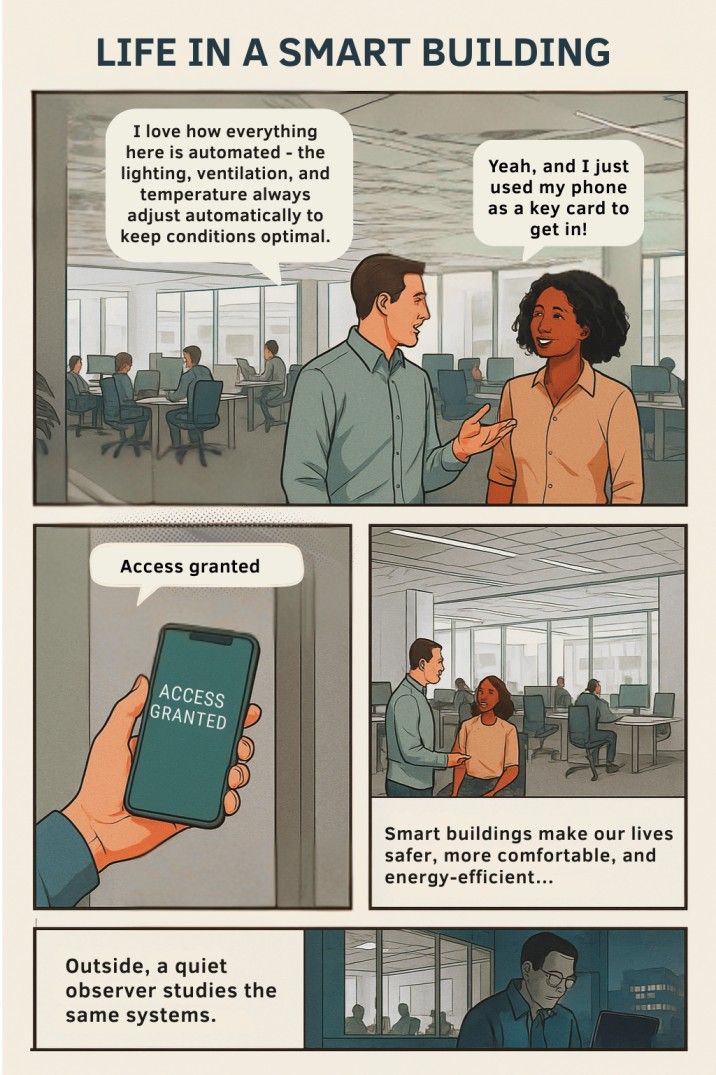
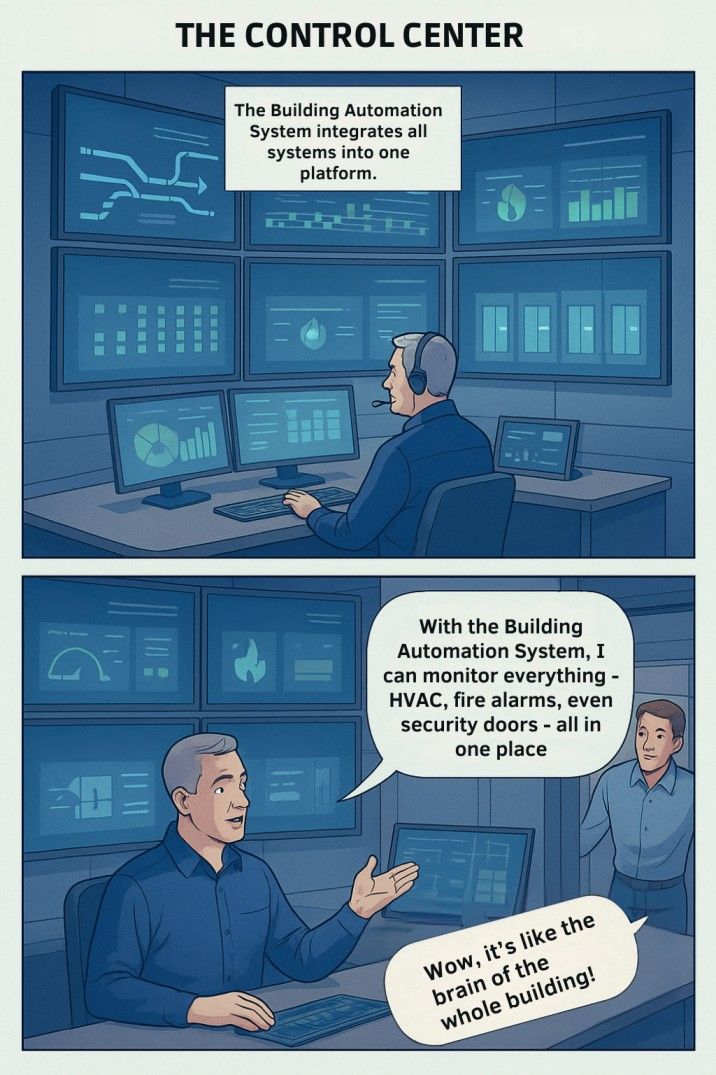
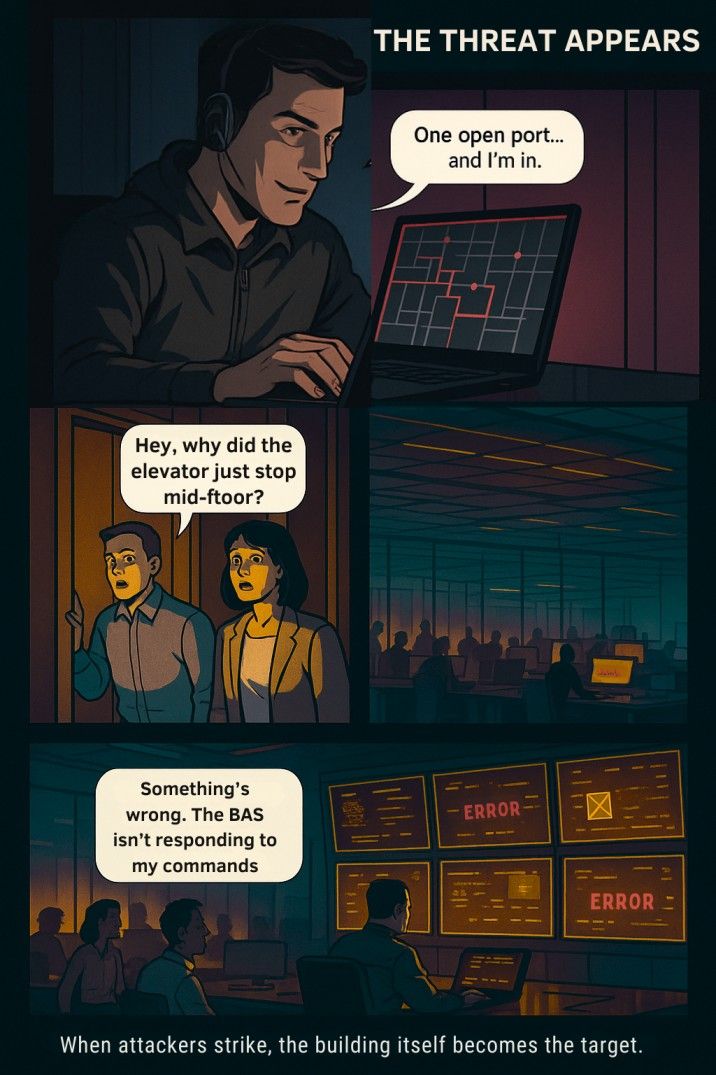
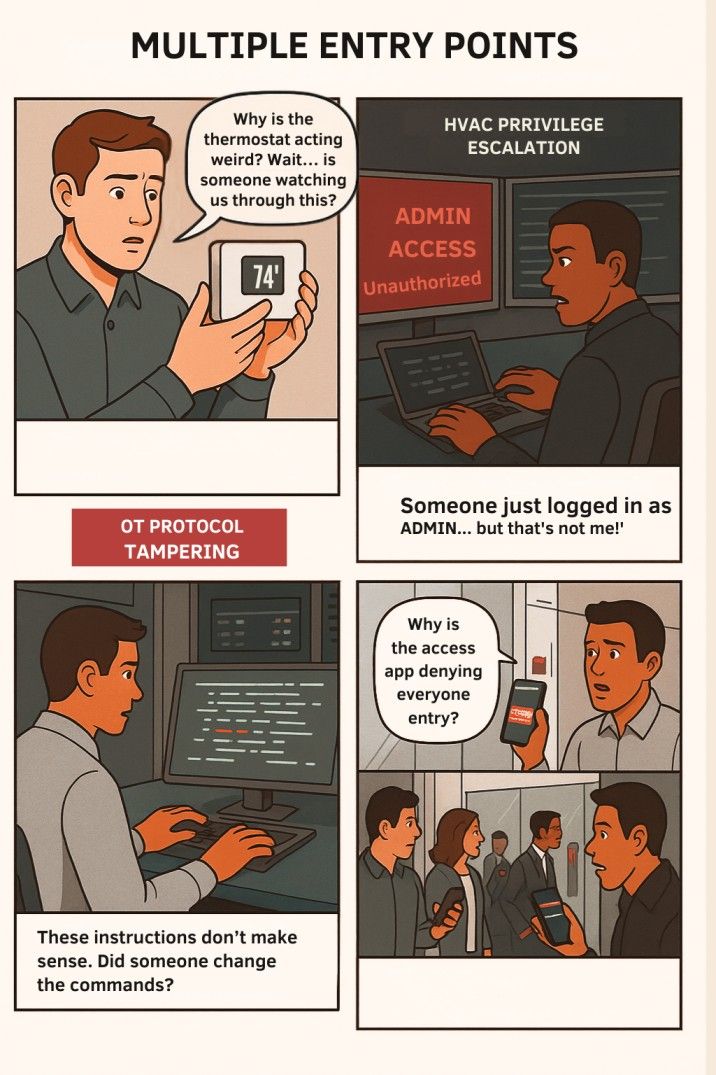
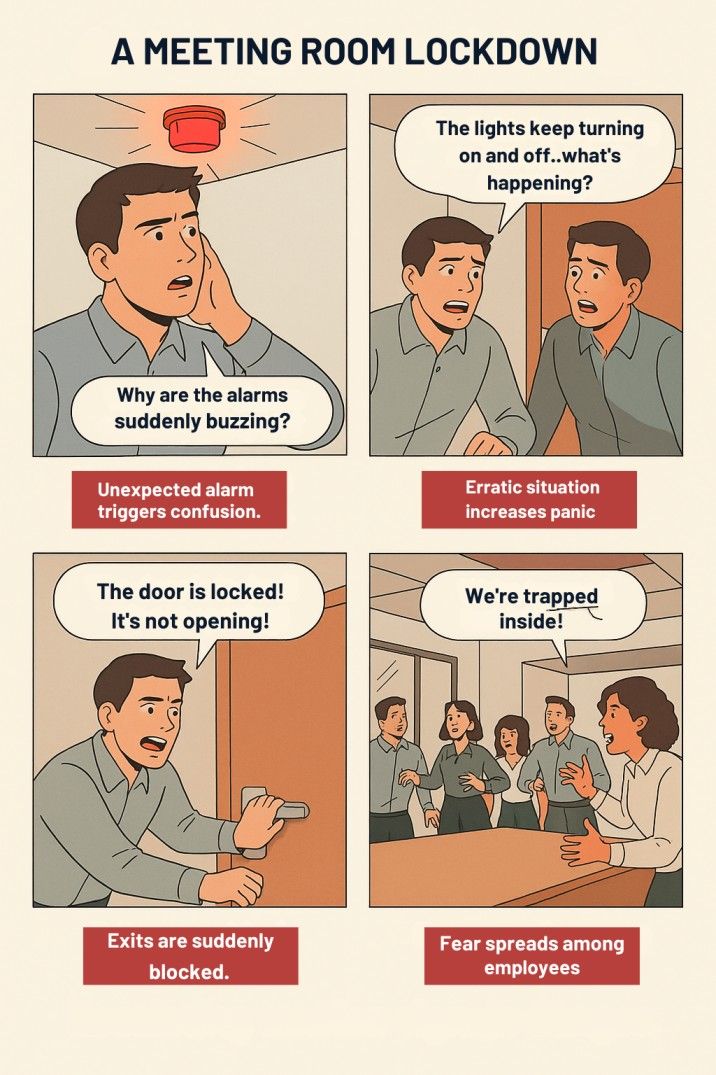

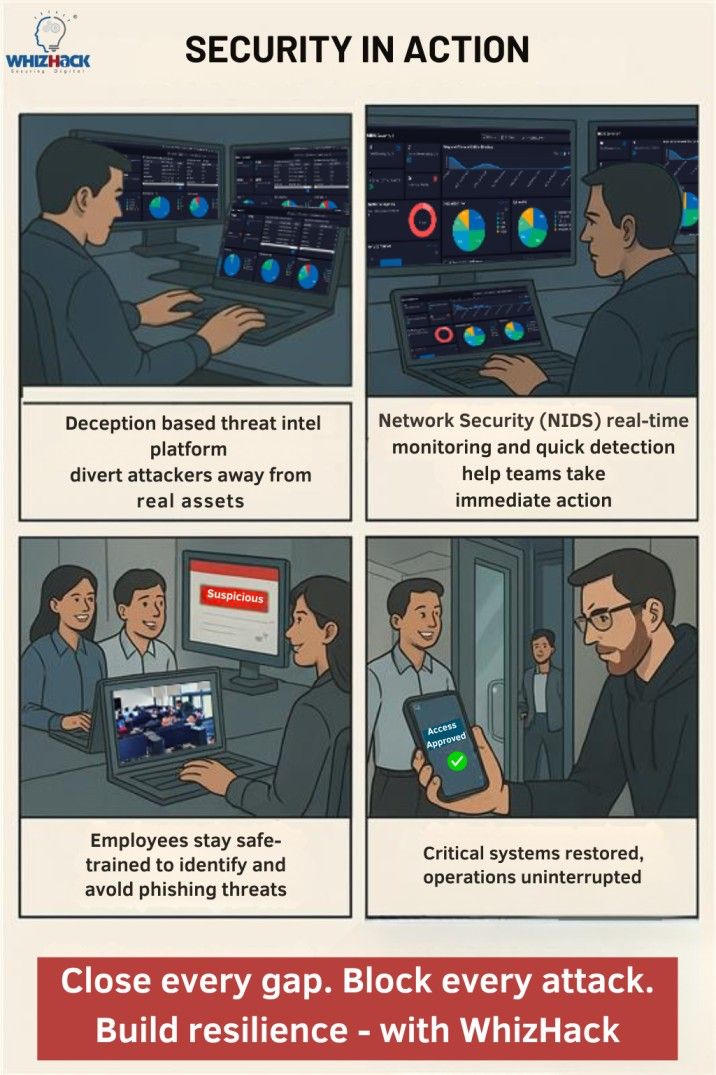
The Cracks in the Foundation
The biggest issue is that many of these systems were built long before a world of constant internet connectivity was a concern. This has left them with some serious blind spots that malicious actors are eager to exploit. Here’s how they often get in:
- Old, Outdated Software: Much of the technology that powers a building's systems is years, or even decades, old. It’s no longer supported with security updates, leaving gaping holes that are incredibly easy to find and exploit.
- Weak Passwords and Credentials: You might be shocked to learn how many systems still use default passwords that are never changed. This is often the first and easiest way for an attacker to walk right in.
- No Separation: A common flaw is that the building's operational network isn't separated from the corporate IT network. This means a simple phishing email sent to an employee’s computer could give a hacker a direct path to the heating, ventilation, and security controls.
- Vendor & Third-Party Access: Buildings often rely on multiple vendors - HVAC technicians, elevator maintenance providers, or security contractors - who all require remote access to keep things running. Without strict controls, these vendor connections become hidden vulnerabilities waiting to be exploited.
90-Day Action Plan to Secure Your Building’s Digital Nervous System With WhizHack
-
Set traps with deception technology Deploy ZeroHack Trace decoys (dummy HVAC controllers, access panels, HMIs) on the network. Any interaction with these decoys signals an intrusion - giving you early, actionable alerts before real systems are touched.
-
Stay ahead with live threat intelligence Use a threat intelligence platform that ingests global attack telemetry and automatically updates your defenses so your building is protected against current attacker tactics - not just yesterday’s threats.
-
Discover every asset in real time Implement ZeroHack ASM to map every device on the building network - HVAC, cameras, sensors, fire panels, and more. Full visibility closes the “forgotten device” gaps attackers exploit.
-
Protect the network edge Deploy ZeroHack-N to monitor traffic, detect protocol abuse, and block suspicious activity at the network edge before it reaches critical controllers.
-
Centralize logs and measure risk By centralizing building-system logs, ZeroHack SIEM ensures you get real-time threat visibility and alerts from a single dashboard.
The Bottom Line
Smart buildings are only getting smarter - more connected, more automated, and more data-driven. But with this evolution comes greater risk.
- Efficiency and sustainability goals mean nothing if a ransomware attack can shut down your HVAC.
- Safety and continuity are on the line every time a building system is exposed.
- And as the numbers show, attackers are already exploiting these blind spots at scale.
The BMS is no longer just an operational system. It’s a strategic asset that requires the same level of cybersecurity as your IT backbone.
The choice is simple: either invest in securing the building’s digital nervous system now, or pay the price later - in downtime, ransom, reputation, and safety.
